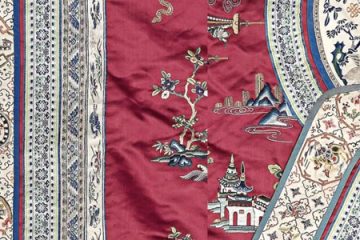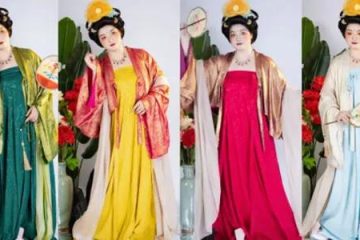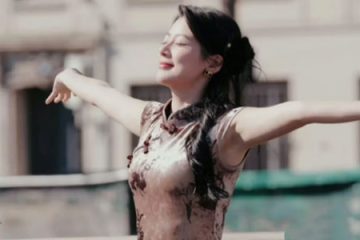Why Hanfu Hats Matter So Much?

In the past, China was known as the “Nation of Clothing and Etiquette,” meaning its dress and ritual culture far outshone that of neighboring regions. If someone dressed sloppily—say, with messy hair and disheveled clothing—they might even be seen as “uncivilized” (though the carefree Wei-Jin era was a bit of an exception).
Traditional Chinese Clothing, especially headwear, carried great importance. After coming of age, men would wear a cap or crown on formal occasions, while women had their own rite of passage, the hairpin ceremony, where they tied up their hair and secured it with pins. This custom persisted through dynasty after dynasty.
But today, things are different—so why don’t we even wear hats anymore?
1. Why Don’t Modern People Wear Traditional Hats Anymore?
To put it simply, the biggest reason is lifestyle changes. As clothing and daily customs became simplified, hatsb gradually lost their place in everyday life.
Once short hair became the norm after the fall of the Qing dynasty and the start of modernization, the old style of tying up long hair to hold a hat in place just didn’t fit anymore.
The same goes for women. Loose hair, ponytails, and quick styles with rubber bands replaced the old practice of carefully pinning and wrapping the hair. Many feel that updos make them look older, so traditional hairstyles are rarely seen outside of special occasions.
In short, once hairstyles changed, the need for traditional hats naturally faded away.
2. How Important Were Hats in Ancient China?
To understand how much value people placed on hanfu hat in the past, let’s start with a line from Shiming 《释名》: “The guan (crown or cap) is what binds and holds the hair.” For men, wearing a hat wasn’t just practical—it symbolized maturity, dignity, and proper conduct.
One famous story recorded in Zuo Zhuan (《左传》) tells of Zilu (子路), a disciple of Confucius. In battle, even as he was gravely wounded and about to die, the strings of his hat broke. Instead of giving in to despair, Zilu calmly retied his hat, choosing to face death with dignity.
This act, remembered as “tying his crown before death,” perfectly embodied the Confucian spirit of upholding ritual and honor until the very end.

Of course, this might be an extreme case, but it shows the deep meaning hanfu hats carried. For ancient Chinese men, the hat wasn’t just an accessory—it was a symbol of self-respect and moral integrity.
“You could lose your life, but you weren’t supposed to lose your hat.”
3. Different Types of Hats in History
Throughout Chinese history, people wore many different kinds of hats. For example, in daily life men often used a jin (巾)—a soft cloth wrap—to cover and secure their topknot so stray hair wouldn’t fall loose. By contrast, the guan (冠) usually referred to a more structured, rigid hat, often paired with formal dress.
These were part of a fixed set: for instance, officials wore the jinxian guan (进贤冠) with their robes, while ceremonial attire required the mian guan (冕冠). There were also simpler everyday caps for holding the hair in place, which looked more understated.

The most familiar style today, especially in historical dramas, is the putou (幞头, a cloth hat). It became iconic during the Tang dynasty and is frequently shown in TV shows set in that era. The term itself is related to ze (帻), meaning a headwrap. There were two main ways of wearing it: the“soft wrap,” where the cloth was tied snugly around the head.

The “hard wrap” style of the putou started with wearing a frame underneath—called a “巾子/jinzi” in Chinese, which was a bit like a wire mesh. The headscarf was then wrapped over the frame, creating a defined hat shape. The design of the jinzi varied slightly across different periods.
In the Tang dynasty, the futou (幞头) was essential for men, suitable for both daily wear and formal occasions, since it could be made simply by wrapping cloth around the head. This made it much easier and lighter compared to more elaborate headgear.
By the late Tang and Song dynasties, the futou evolved into a more formal, structured hat with different shapes. For example, the Song version featured variations in the two flaps, which could be tied in flat, crossed, curved, or straight styles.
In the Ming dynasty, this design developed into the well-known wushamao (black gauze cap). Later, during the Qing dynasty, it transformed again into the round “melon cap” and the official dingdai (顶戴) cap.

Beyond the everyday jin (巾) and the formal guan (冠), there were also many practical types of hats in history—designed to block wind and sand, offer sun protection, or even keep one’s identity hidden. The functions were surprisingly diverse.
During the Republican era, influenced by Western fashion, Chinese men cut their hair short. At the time, wearing a hanfu hat was also considered proper etiquette in the West, so hats remained part of daily life in China as well.
Up until the early years of reform and opening, hats were still widely promoted, including styles like military caps, cadre caps, and the so-called “liberation cap.”
In the late Qing and early Republic, men often favored wide-brimmed hats, fedoras, bowler hats, or the traditional gua pi mao (melon cap). Even poorer farmers, who couldn’t afford formal headgear, would simply wrap a cloth around their heads as a substitute.


After the founding of the People’s Republic, official dress codes around hats were only applied to certain professions—such as soldiers, police, and high-risk industries—while ordinary people were no longer bound by any formal rules of dress etiquette. Over time, hats became purely professional or functional.
Today, people usually wear hanfu hats for practical reasons—sun protection, safety, covering bald spots, or simply avoiding a hair-wash. What’s often forgotten, however, is that in the past hats carried a deeper meaning: they symbolized “dressing properly” and embodying dignity.
Summary

Do you enjoy learning about traditional Chinese hat culture? Share your thoughts in the comments—I hope this post gave you some fun new insights into hanfu hat and its history.



0 Comments